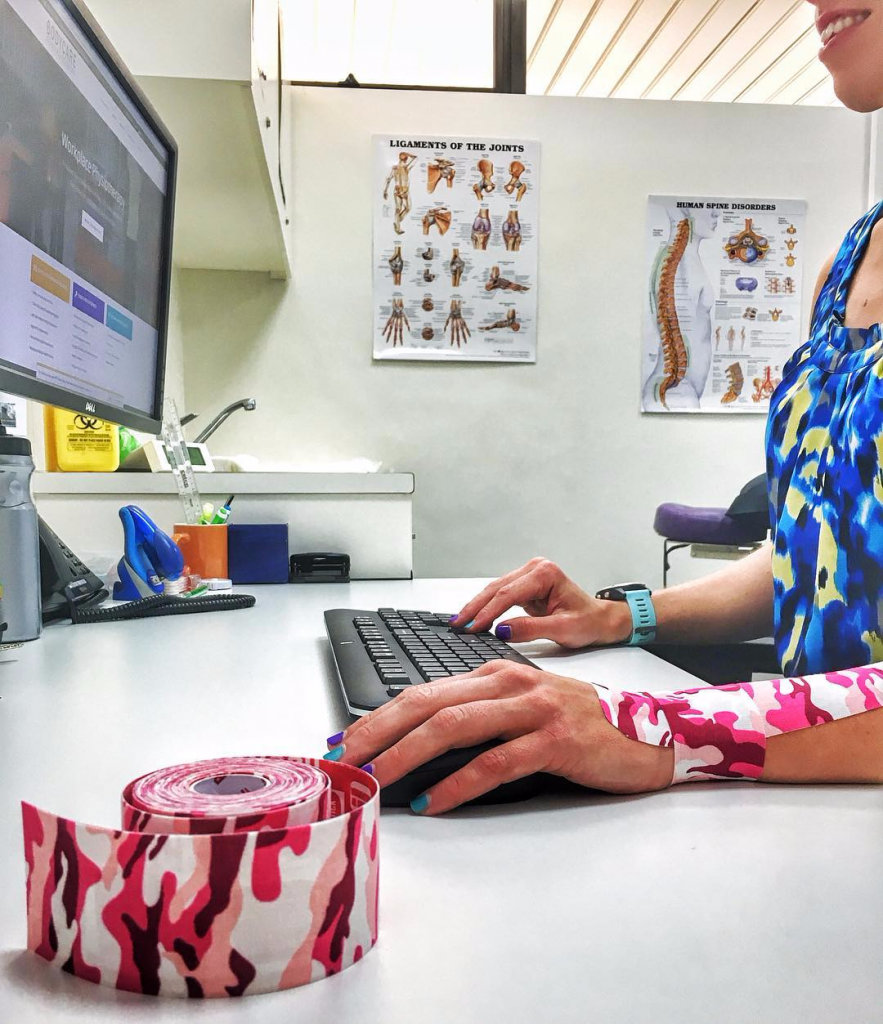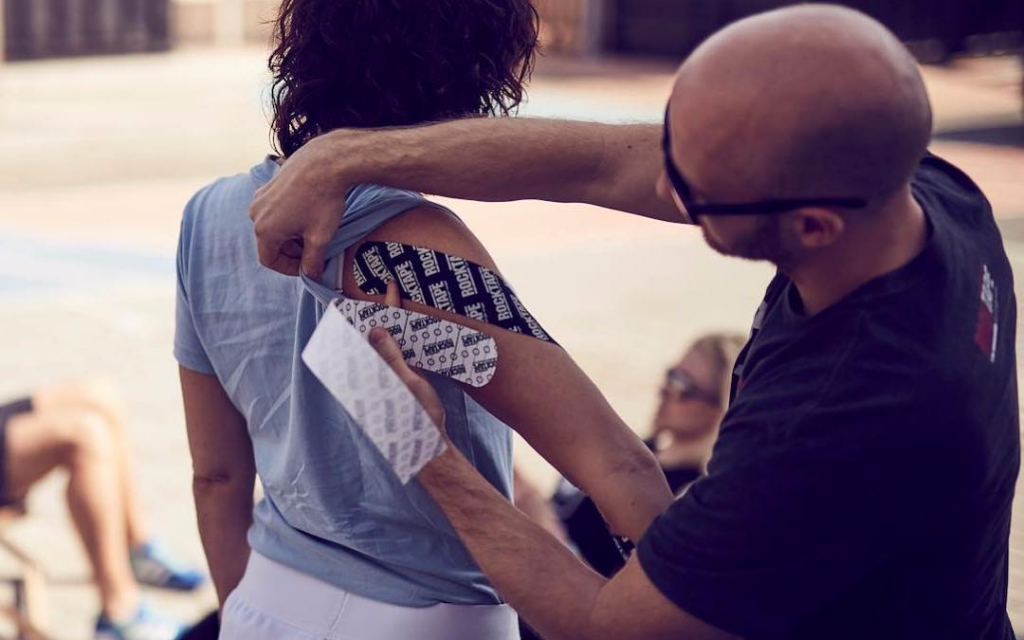When people see kinesiology taping in action, the first question is usually, “Does it work?” followed quickly by, “How does it work?” Unfortunately, there are many misconceptions about what this kind of tape does, and how, so this article will get you on the same page with what science is telling us!
All of the effects of kinesiology tape came from the mechanical and neurosensory actions of the tape. When kinesiology tape is placed on the skin, some pretty cool things start to happen. Because of the stretchiness of the tape, it mechanically lifts and, in some cases, compresses the skin it is applied to. When you consider a cross-section of human skin and the underlying tissues, you see that each layer of tissue is connected to one beneath it through slips of tissue often referred to as, “skin ligaments.” Because of this, if you create a lifting effect with tape on the skin, this effect transfers to deeper layers, effectively decompressing the tissues beneath where the tape is applied.
Decompression Therapy
This mechanical lifting effect is best observed when kinesiology tape is used over swollen and bruised areas. Time after time we have seen dramatic changes in inflammation and bruising when kinesiology tape is “fanned” over the affected area. Often in 1-2 days a bruise is almost completely cleared, and we have seen exciting effects on limb edema following lymphectomies and other procedures that can result in chronic edema and swelling. It is likely that by decompressing the skin and the layers of tissue beneath it, lymphatic ducts and blood vessels can clear fluid more efficiently, resulting in these often- dramatic changes.
Pain Management
While this lifting effect is most easily observed over bruising, this same effect can help reduce discomfort*. By decompressing tissue there may be a discomfort*-modulating effect from reduced mechanical pressure on free nerve endings. Chronic musculoskeletal discomfort* is often associated with a decrease in the sliding and gliding capacity of fascial tissues. Creating decompression and shear in these layers via the stretch of kinesiology tape can help improve sliding and gliding and may be associated with a reduction in discomfort*, too.
Movement Correction
To some extent, the brain makes decisions about movement based on force and the direction of that force in skin and connective tissue. This is particularly true in the fingers, where the detection of fine shearing forces are part of the reason humans have the dexterity we have. Creating specific directions of shear via elastic tape can change movement patterns in this same way. Clinicians see this on a daily basis when taping knees and shoulders, particularly. By using the stretch of tape and creating patterns of strain in the skin and underlying tissue, this changes the sensory input to the brain and results in altered output. Two of the primary outputs from the brain we are concerned with are movement and discomfort*, and so a favorable outcome of kinesiology taping can be discomfort* reduction and/or better movement simply because of adding to and altering the sensory input into the brain and promoting an improved output.
This is starting to sound a little complicated, so to bring the message back around, the effects of kinesiology tape in reducing swelling, decreasing discomfort* and changing movements comes from the mechanical effects of the tape and what happens in the brain as a result of these effects. Decompression and shear caused by the stretch in kinesiology tape and shear patterns created by placing it on the skin alters signaling to the brain. Because discomfort* and movement are both outputs from the brain, then changes in discomfort* reduction and movement are happening because we’ve altered the input being received from the area targeted by the tape. In this way, kinesiology tape doesn’t force the body to do anything it can’t do or “doesn’t want to do.” It simply encourages a normalization of function and aids the brain with more information. Pretty cool, huh?!
Want to get your own RockTape?
Get the world’s best kinesiology tape direct from RockTape! Move more, and move better.
